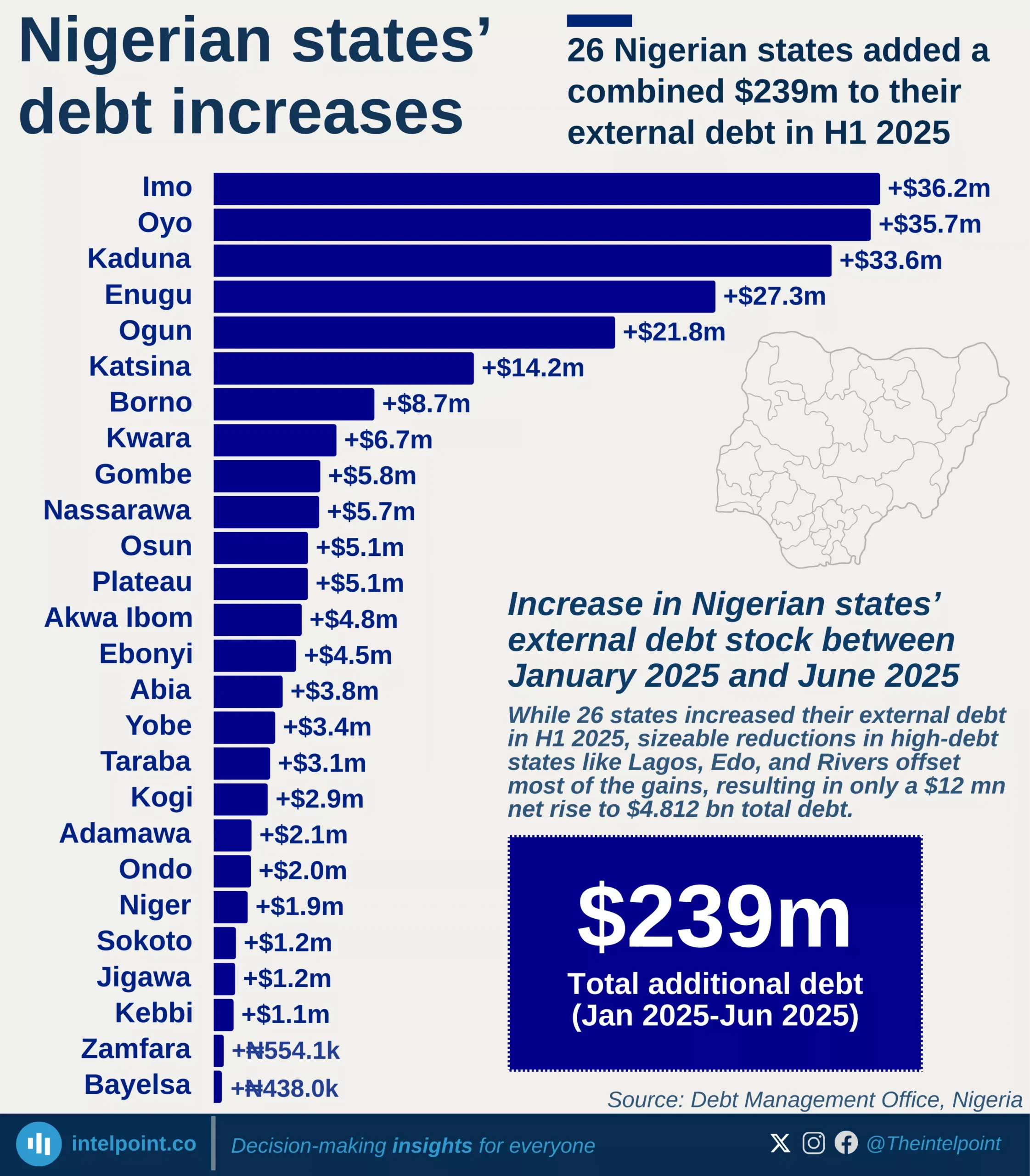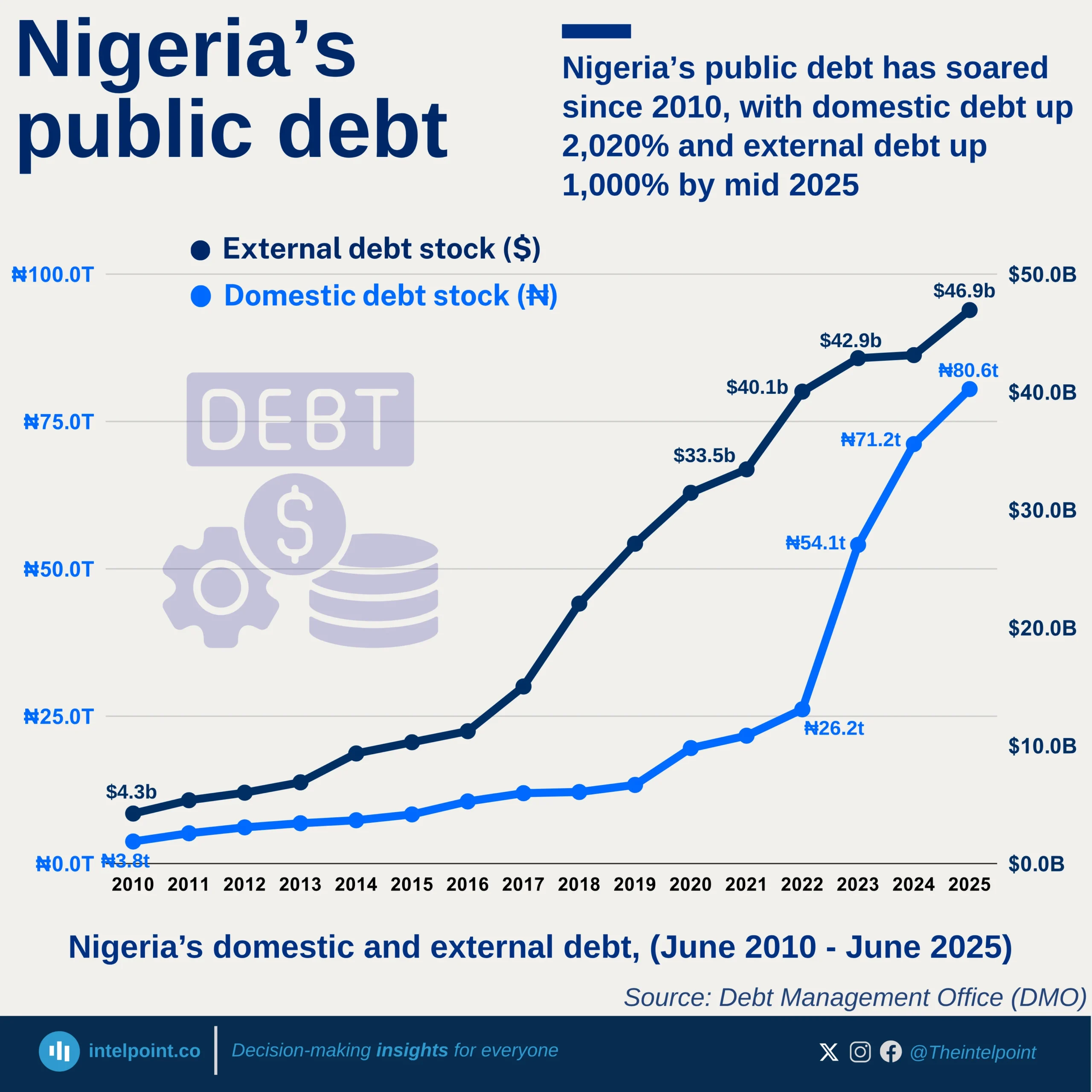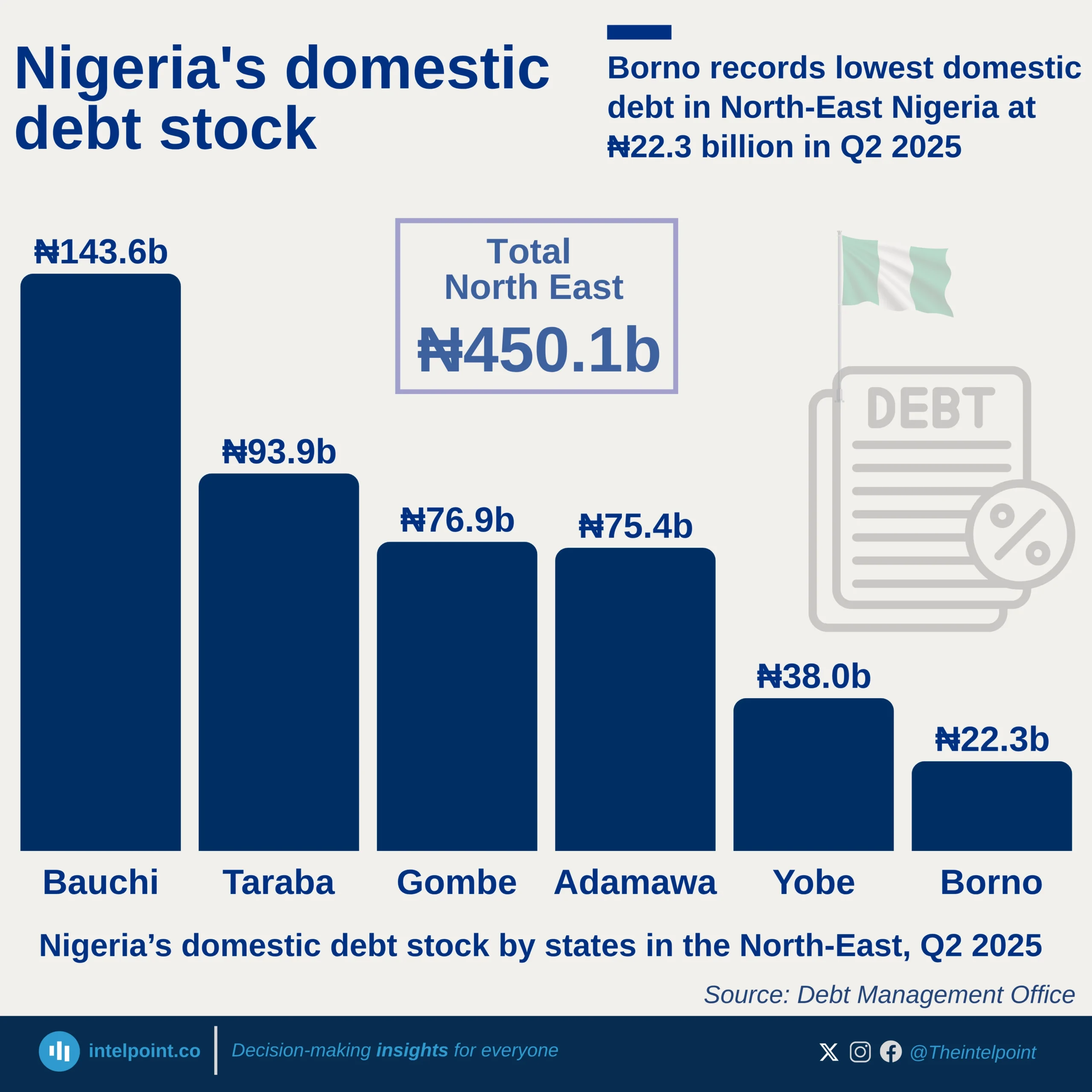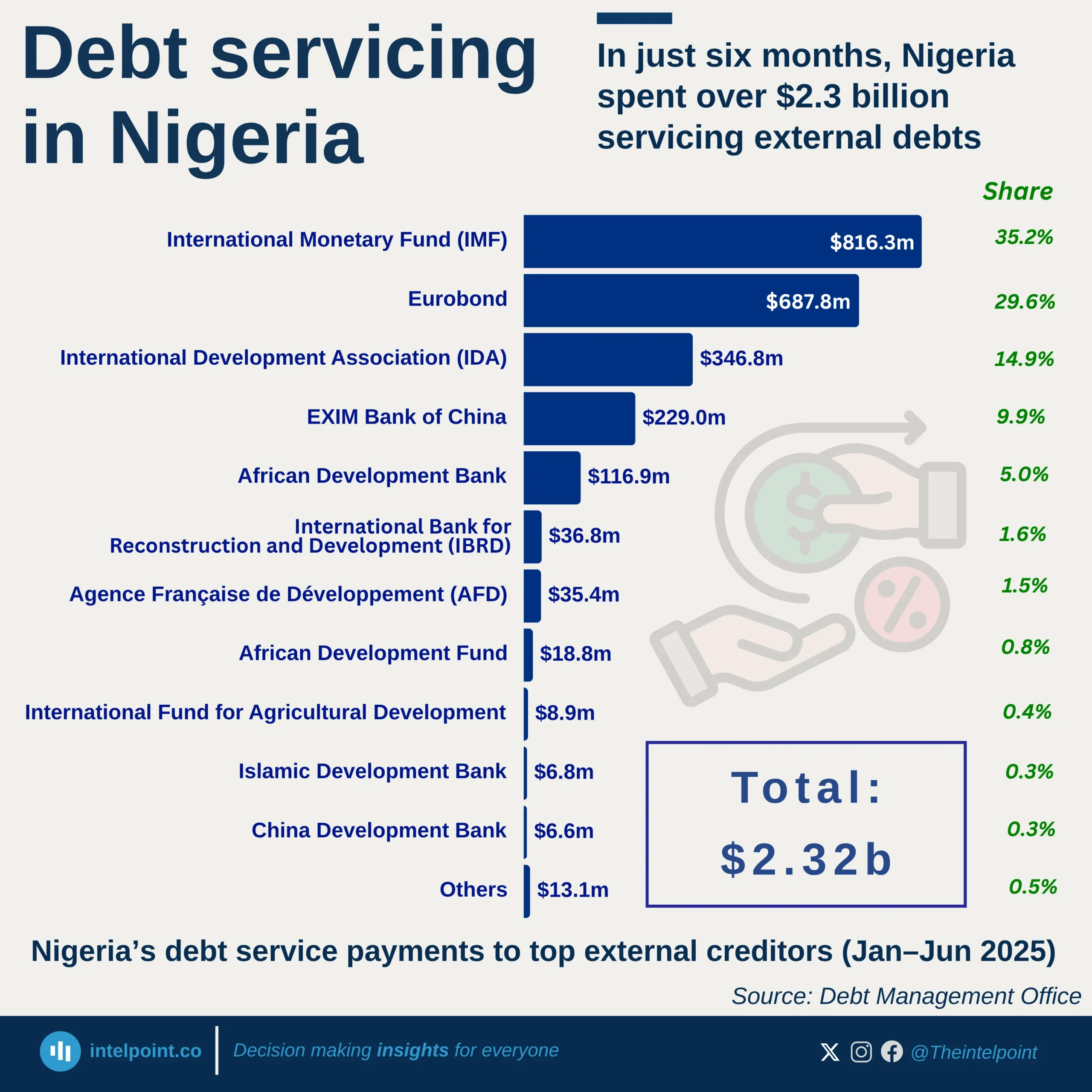States' share of Nigeria's public debt has dropped from 20.5% in 2019 to 8.5% in 2024, while the federal government’s debt has risen to over 91% of the total, in dollar terms.
The FG's debt grew from $66.7 billion to $83.6 billion in this period, while the states' debt dropped from $17.2 billion in 2019 to $7.8 billion, marking a shift in borrowing dynamics at federal and state levels.
Notably, states and FCT debt decreased in dollar terms but increased in naira terms, while FG debt rose in both dollar and naira terms over the same period.





